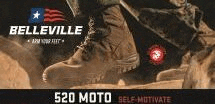The Huron™ 3-Day Assault Pack – MultiCam Arid™ (HRN-LAP003-MCA) is a new take on the classic 3-Day design. This ultra-light weight pack was designed to be utilized as an everyday backpack while still providing the mission specific needs you may require. The pack includes one hydration port, an internal hydration bladder pocket, hard sewn Velcro® loop for name tapes and Antimicrobial/FR treated padded spacer mesh on the back and shoulders. This pack is super comfortable, whether you are carrying tactical gear or your laptop and books.
Features:
• Wt. 2.10 lbs.
• Main Compartment Dim: 18″ H x 12.5″ W x 6.5″ D
• Front Compartment Dim: 14″ H x 10.5″ W x 2.25″ D
• Cubic Liters: 29L
• Main Construction: 1000d Cordura®
• Three Zippered Compartments
• Four Side Buckle Compression Straps
• Drag Handle
Time is running out! The TYR Tactical® Black Friday Sale ends this Friday.
Take 37% off the Limited Edition Huron™ 3-Day Assault Pack in MultiCam Arid™. Final Sale Price: $149.95 (MSRP: $239.95). This item is in-stock and ready to ship. What you’re looking for not on sale? Take 17% off your retail purchase with coupon code: BLKFRIDAY. Offer ends 12.01.17.



























































































































